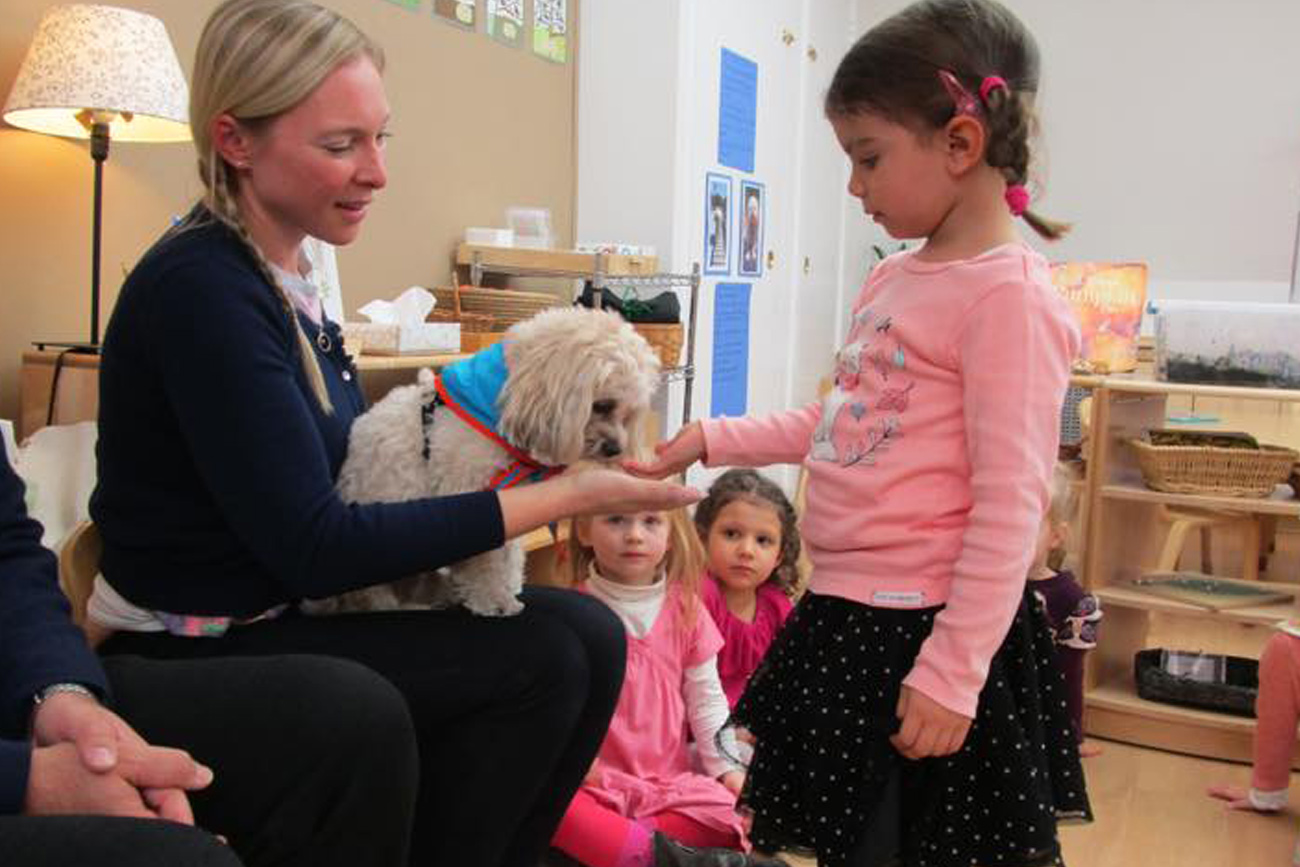Therapy Dogs in Schools
“I’ve always had this feeling, that all dogs are really therapy dogs.”
- Meg Donohue
As our understanding of the human-animal bond has grown, there has been increasing interest in the use of therapy dogs in a variety of settings. One area where therapy dogs are particularly effective is in the classroom. In this blog, we will explore the benefits of therapy dogs in schools.
- Reduced Stress and Anxiety
One of the most significant benefits of having therapy dogs in the classroom is the reduction of stress and anxiety. Many studies have shown that interacting with dogs can help reduce stress levels, lower blood pressure, and improve mood. The presence of a therapy dog can help create a calming environment, particularly for students who may struggle with anxiety or stress. - Improved Social Skills
Therapy dogs can also help students develop their social skills. Interacting with dogs can help students learn how to communicate non-verbally, read social cues, and develop empathy. These skills can translate to improved social interactions with peers and adults. - Increased Focus and Attention
Another benefit of having therapy dogs in the classroom is the potential for improved focus and attention. Research has shown that spending time with dogs can improve cognitive functioning, including attention and memory. Having a therapy dog in the classroom can help students stay focused on their work and be more engaged in classroom activities. - Enhanced Learning
The presence of therapy dogs in the classroom can also enhance the learning experience for students. Studies have shown that dogs can help increase motivation and enthusiasm for learning. Additionally, therapy dogs can be used as a teaching tool in a variety of subjects, including reading and writing. - Emotional Support
Therapy dogs can also provide emotional support to students. The unconditional love and acceptance that dogs provide can be particularly beneficial for students who may be struggling with emotional issues. Therapy dogs can also serve as a comforting presence during difficult or stressful times. - Reduced Absenteeism
Having therapy dogs in the classroom may also help reduce absenteeism. Students may be more likely to attend school when they know they will have the opportunity to interact with a therapy dog. Additionally, the presence of a therapy dog can help create a positive and welcoming environment, which may encourage students to come to school. - Improved Teacher-Student Relationships
Finally, therapy dogs in the classroom can help improve teacher-student relationships. Interacting with dogs can be a bonding experience for students and teachers, which can help create a positive classroom culture. Additionally, therapy dogs can serve as a non-judgmental and non-threatening mediator in difficult teacher-student interactions.
The benefits of therapy dogs in schools are numerous. From reducing stress and anxiety to improving social skills and enhancing learning, therapy dogs can have a significant impact on the well-being and academic success of students. Additionally, therapy dogs can provide emotional support and help create a positive classroom culture. If you are an educator or school administrator, consider bringing a therapy dog into your classroom to help support the growth and development of your students.
Choosing toys and materials can be so confusing!
Here are some of our suggestions to get a special treat for that special (dog) friend:
What does the research say?
Overall, the research suggests that therapy dogs can have numerous benefits for children in the classroom, including reducing stress and anxiety, improving social interaction and communication skills, improving academic performance, promoting emotional development, and encouraging responsible behavior.
- Reducing Stress and Anxiety in Children
In a study conducted by the University of British Columbia, researchers found that children who interacted with therapy dogs experienced a significant decrease in anxiety levels (Barker et al., 2018). Similarly, a study published in the Journal of Psychiatric Research found that therapy dogs reduced anxiety and improved mood in hospitalized children (Lenthall et al., 2008). A study published in the Journal of Research in Special Educational Needs found that therapy dogs had a positive effect on the social interactions of children with autism spectrum disorders (ASD) (O’Haire et al., 2013). - Encouraging Social Interaction and Communication Skills
A study published in the Journal of Research in Special Educational Needs found that therapy dogs had a positive effect on the social interactions of children with autism spectrum disorders (ASD) (O’Haire et al., 2013). Similarly, a study published in the Journal of Pediatric Nursing found that therapy dogs improved socialization and communication skills in hospitalized children (Barker et al., 2017). - Improving Academic Performance
A study published in the International Journal of Workplace Health Management found that employees who brought their dogs to work experienced lower levels of stress, which led to higher levels of job satisfaction and productivity (Allen et al., 2018). Similarly, a study published in the Journal of Occupational Health Psychology found that employees who brought their dogs to work reported lower levels of perceived stress (Barker et al., 2012). - Promoting Emotional Development
A study published in the Journal of Positive Psychology found that interacting with dogs increased feelings of well-being and social connectedness in college students (Barker et al., 2016). Similarly, a study published in the Journal of Psychiatric Research found that therapy dogs improved mood and well-being in hospitalized children (Lenthall et al., 2008). - Encouraging Responsible Behavior
A study published in the Journal of Behavioral Education found that interacting with a therapy dog increased responsible behavior in elementary school children (Pavlova et al., 2018). Similarly, a study published in the Journal of Education and Training Studies found that interacting with therapy dogs increased responsible behavior in high school students (Wang et al., 2020).
Read about the benefits of puppets in the classroom here!
